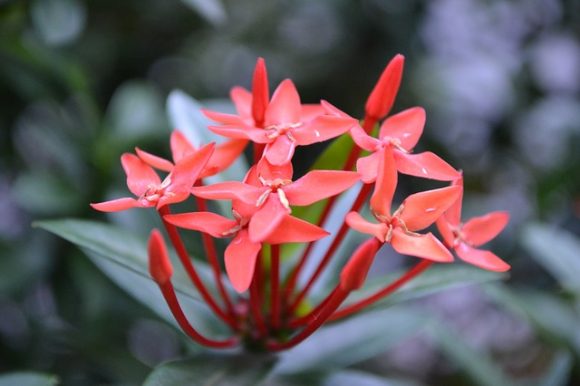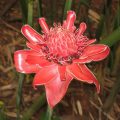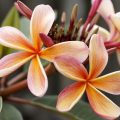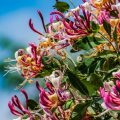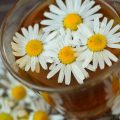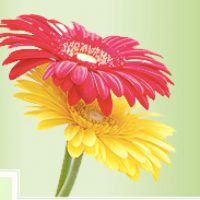- The Miraculous Shiny Bush Plant - January 18, 2021
- Colorful, Edible and Medicinal Celosia - January 10, 2021
- Radish, a Nutritional Power House - December 19, 2020
Santan, also known as jungle flame, and botanically referred to as ixora coccinea, is a dense, flowering shrub in the rubiaceae family. It is native to Sri Lanka and India but is now a popular ornamental and hedge shrub in most tropical and subtropical regions of the world. In the US, it thrives in USDA zones 9 and above.
[Note: The Right Flowers is not a medical site. Knowledge of and information about the therapeutic benefits and applications of flowers, while known through the ages, does not constitute medical advice. If you are having health issues, you should consult with a physician.]
Santan’s leaves are either stalkless or have very short stalks and feature an oblong or heart shape with a blunt tip. The plant brings forth beautiful red, white, orange or pink flowers in dense clusters borne on short stalks. Normally, santan blooms all year round.
While santan is cultivated mostly for ornamental or hedge purposes, it has many other benefits. The leaves and flowers of the plant have medicinal and culinary qualities. These parts contain flavonoids, phenolic acids, quercetin, cyanidin, and ferulic acid. Phytochemical screening has also yielded glycosides, alkaloids, steroids, tannins, saponins, and resins.
The compounds mentioned above give the plant sedative, antimicrobial, antiseptic, antitumor, hepatoprotective, chemoprotective, cytotoxic, analgesic and antimutagenic properties.
In folk medicine, santan flowers have been used to treat leucorrhea and dysentery. Deconcotions of the blossoms were also used to treat amenorrhea, hemoptysis, hypertension, bronchitis, loss of appetite, dysmenorrhea, and gonorrhea. In addition, santan flower extracts were used to bath babies with skin infections and wash inflamed eyes.
Wound healing
Studies conducted in the 2000s to evaluate the healing capabilities of the flower extract on wounded rats showed an increase in tensile strength and granuloma tissue weight. Researchers concluded that the healing power of santan flower extracts was due to increased collagen deposition, maturation, and alignment.
Chemoprotective
Studies show that santan flowers have chemoprotective qualities. In a study involving mice with cyclophosphamide-induced toxicity, researchers established that administration of santan flower extracts protected the mice against drug-induced hepatoxicity. The action of the flower extracts was attributed to the presence of ursolic acid and triterpenoids.
Antiasthma and anti-inflammatory
In a study published in the Journal of Pharmacology and Toxicology, 2011, researchers sought to study the effects of santan leaf extracts in asthmatic rats. The study showed that santan inhibited AHR in OVA-induced asthma and suppressed eosinophilia. The extracts were shown to lower inflammation while repairing epithelial cells. As a result, researchers concluded that santan has antiasthmatic and antiinflammatory capabilities.
Apart from having medicinal qualities, santan flowers are edible. Foragers regularly talk of plucking the flowers in the wild and sucking on the sweet nectar. The petals also make great snacks when tossed into batter and mixed thoroughly. The mixture is deep-fried until it is crisp and served with any dipping sauce including tomato.
So, you can choose to grow santans for their beautiful flowers, for medicinal reasons or culinary purposes. Whatever the reason that drives you to grow these beautiful flowers, your efforts will be richly rewarded when they come into bloom.
